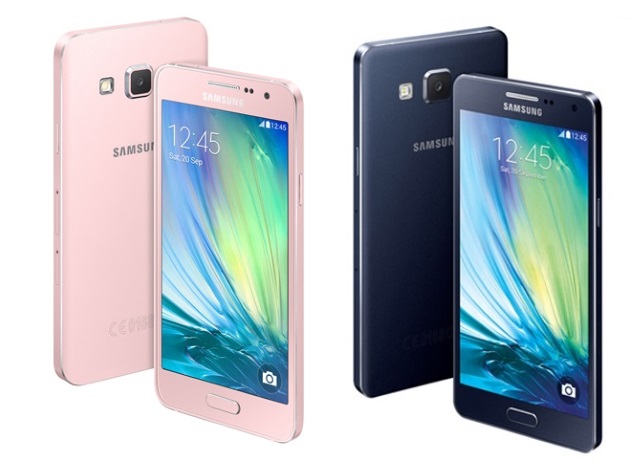
Samsung Electronics Co Ltd unveiled two new mid-tier handsets with a premium design as it prepared to deliver a riposte to its low-priced Chinese rivals and reclaim its title as the top brand in the world's biggest smartphone market.
The Galaxy A3 and Galaxy A5 will be Samsung's first devices to feature fully metal bodies and its thinnest smartphones to date. In size, they are comparable to those of the top-of-the-line Galaxy S5 , though of lesser screen resolution quality.
Samsung said on Friday that it will start selling the Galaxy A3 and A5 in China sometime in November. It classified them as mid-tier, and said they will be launched in other "select markets", without disclosing the pricing.
The announcement, combined with hopes for an earnings recovery and bigger dividends, pushed Samsung's shares to a two-month high in Seoul in midday trade on Friday.
The news comes a day after Samsung reported its worst quarterly operating profit in more than three years. Earnings from its handset division slumped 73.9 percent from a year earlier.
The company said its responses to "rapid shifts in the competitive landscape" were not quick enough. It vowed to revamp its offerings.
"For our mid to low-end smartphones we will enhance product competitiveness by differentiating our displays and materials as well as upgrading camera functionality," Senior Vice President Kim Hyun-joon told analysts on Thursday.
The world's smartphone leader is regrouping as it lost market share in annual terms for the third straight quarter in July-September, according to Strategy Analytics.
It has been beaten by Apple Inc's iPhones in the premium segment and undercut by Chinese rivals like Lenovo Group Ltd and Xiaomi Inc at the bottom end.
Samsung will likely accept lower margins going forward to preserve market share and growth volume, analysts said. But most do not expect a firm recovery until mid-2015 at the earliest.
"A lineup change is a costly process, just like re-doing your home interior design," said KTB Investment analyst Jin Sung-hye.
© Thomson Reuters 2014
